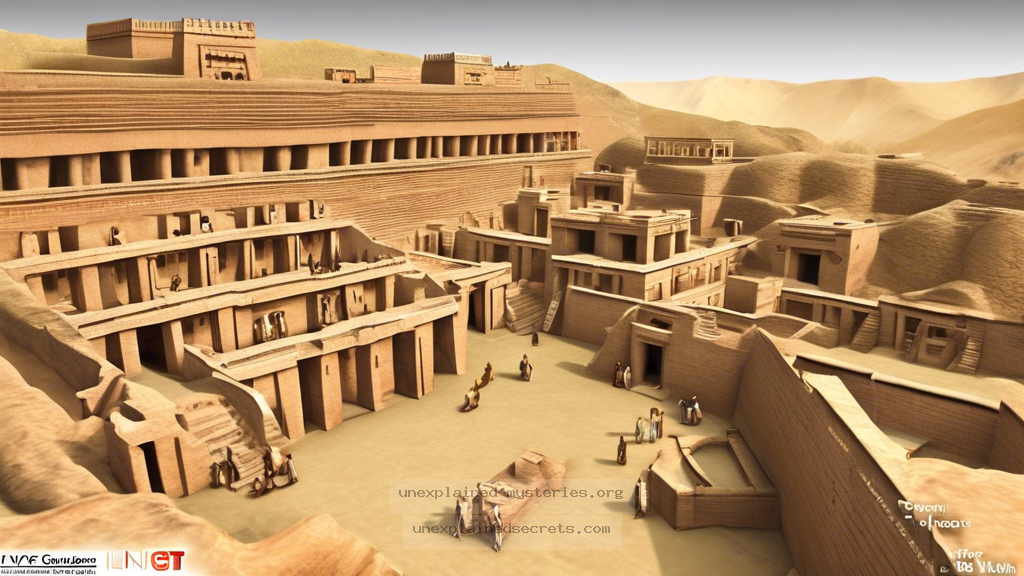What Happened to the Advanced Civilization of the Indus Valley?
What Happened to the Advanced Civilization of the Indus Valley?
The Indus Valley Civilization (IVC), one of the world’s earliest urban cultures, flourished around 2500 BCE in what is now Pakistan and northwest India. Yet, despite its remarkable advancements in city planning, architecture, and social organization, the ultimate fate of this civilization remains shrouded in mystery. What caused such a thriving society to decline and, ultimately, vanish? This question matters not only for understanding the past but also for decoding the complexities of human civilization’s rise and fall.
Historical Context: The Rise of the Indus Valley Civilization
The Indus Valley Civilization emerged during the Bronze Age and is noted for its sophisticated urban centers, such as Harappa and Mohenjo-Daro. These cities showcased advanced drainage systems, standardized brick sizes, and impressive architectural designs. The civilization was primarily agrarian, with evidence of crops such as wheat, barley, and cotton. Trade flourished with neighboring regions, including Mesopotamia, evidenced by seals and artifacts found in archaeological sites.
However, unlike other ancient civilizations, the IVC did not leave behind extensive written records. The Indus script remains undeciphered, which complicates our understanding of their societal structure, culture, and eventual decline. This lack of documentation adds a layer of intrigue to the civilization’s fate.
Core Theories on the Decline of the Indus Valley Civilization
Several theories attempt to explain the decline of the Indus Valley Civilization. Some prominent hypotheses include:
- Climate Change: Evidence suggests that the region experienced significant climatic shifts during the late Harappan period, leading to arid conditions. This could have drastically affected agriculture, undermining the civilization’s economic foundation.
- River Dynamics: The Indus River, crucial for the civilization’s sustenance, may have shifted its course or diminished in flow. This would have rendered agricultural practices unsustainable, forcing migration.
- Invasion Theories: Some historians propose that external invasions, possibly by Indo-Aryan tribes, could have contributed to the civilization’s downfall. However, archaeological evidence for large-scale warfare remains scarce.
- Internal Decline: Social strife, resource depletion, and political fragmentation could have led to a gradual decline, causing cities to be abandoned one by one.
Note: Climate change and river dynamics are currently the most supported theories due to archaeological evidence, while invasion theories lack substantial backing. ⚠️
Practical Implications of Climate Change
The theory of climate change as a significant factor in the decline of the IVC has garnered much attention in recent years. Paleoclimatic studies indicate a transition from a humid climate to a drier one around 2000 BCE. This transition could have led to crop failures and a food crisis.
Research conducted by scientists analyzing sediment cores from the Arabian Sea provides insights into the monsoon patterns during this time. The Indus Valley’s dependency on seasonal monsoon rains would have made it particularly vulnerable to such climatic changes. As resources dwindled, the urban centers may have lost their capacity to support large populations, leading to depopulation and abandonment.
Archaeological Evidence Supporting River Dynamics
Investigations into the hydrology of the Indus River system have yielded intriguing data. Archaeological surveys have revealed that many Harappan sites are located near now-dry riverbeds, suggesting that the rivers may have changed course or dried up entirely during the civilization’s decline. This disruption would have severely impacted agriculture and trade, leading to the civilization’s downfall.
Geological studies conducted in the region support this theory, indicating that the river’s sediment patterns changed significantly after 2000 BCE. Such changes would have made the fertile floodplains less accessible, forcing inhabitants to either migrate or adapt to increasingly difficult conditions.
Alternative Perspectives: The Role of Social and Political Factors
While environmental factors are critical in understanding the decline, other scholars argue that social and political dynamics could have played a more significant role. Internal strife, including class divisions or resource competition, may have weakened the social fabric of the civilization.
Evidence from archaeological findings, such as varying sizes of dwellings and the abundance of luxury items in certain areas, hints at social stratification. This division could have led to tensions among different groups, contributing to the civilization’s vulnerability during crises.
Social unrest and internal decline are often overlooked but could provide crucial insights into how civilizations manage crises. 💡
Common Misconceptions and Clarifications
One prevalent misconception about the Indus Valley Civilization is that it abruptly disappeared due to a single catastrophic event, such as an invasion or natural disaster. In reality, the decline was likely a complex interplay of various factors that unfolded over centuries.
Another misconception is that the civilization was entirely wiped out. In fact, archaeological evidence suggests that some communities continued to exist in different forms post-IVC, adapting to the changing environment. This continuity highlights resilience rather than a total collapse.
Best Practices for Investigating Lost Civilizations
Investigating lost civilizations like the IVC requires a multidisciplinary approach, combining archaeology, paleoclimatology, anthropology, and even sociology. Here are some best practices:
- Collaboration: Scholars from different fields should work together to piece together the complex narratives of ancient societies.
- Technology Utilization: Employing advanced technologies, such as satellite imagery and ground-penetrating radar, can reveal hidden structures and resources.
- Field Surveys: Conducting extensive surveys can uncover artifacts and ecofacts that shed light on daily life and environmental conditions.
Future Developments and Ongoing Research
Research into the Indus Valley Civilization is far from over. Ongoing excavations, such as those at sites like Rakhigarhi and Dholavira, are revealing new insights about the IVC. Moreover, advancements in technology, like DNA analysis and isotope studies, may help decode the social dynamics and migration patterns of ancient peoples.
Furthermore, interdisciplinary studies focusing on climate data and archaeological evidence continue to refine our understanding of how environmental changes influenced human societies. As more data becomes available, scholars remain hopeful that we can build a more comprehensive picture of the Indus Valley Civilization and its mysterious decline.
Conclusion: Unraveling the Mystery of the Indus Valley Civilization
The fate of the Indus Valley Civilization is a captivating mystery that intertwines environmental, social, and political narratives. Theories surrounding climate change, river dynamics, and social factors all contribute to a complex understanding of how such an advanced society could decline. Misconceptions about the abruptness of this decline overshadow the nuanced reality of gradual change and adaptation.
Future research will undoubtedly continue to peel back the layers of this ancient civilization, revealing more about its successes and failures. As we strive to understand the past, we may also uncover lessons applicable to modern society, particularly regarding resilience in the face of environmental changes and social upheaval. ✅
Other Articles
Recent Posts
- What Happened to Flight MH370? The Conspiracy Theories That Still Haunt Us
- What Secrets Lurk Within the Walls of the Infamous Trans-Allegheny Lunatic Asylum?
- What Evidence Supports the Existence of Bigfoot in the Pacific Northwest?
- What Happened to the Indus Valley Civilization? Unraveling the Mysteries of Ancient Urban Life
- Can Telepathy Be Scientifically Proven Through Laboratory Evidence?







